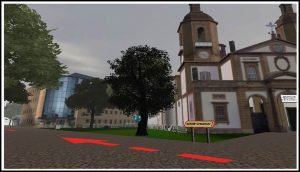Navigation and the developing brain
Nora S. Newcombe
Dept of Psychology, Temple University, USA
Human infants are unable to move on their own until the advent of crawling around 8 months. Confident independent walking begins in the second year of life, allowing access to a wider visual world while navigating. Thus, over the first two years, the major challenge is the calibration of habit systems and associative learning with inertial navigation cues and distal frameworks composed of distal landmarks and boundary cues. Initial place learning is evident towards the end of the period. Children of 3 to 8 years show progressive increases in their proficiency at combining sources of information, including geometric and landmark cues, and inertial and allocentric cues. By around 12 years, we see adult-level performance on cognitive mapping tasks requiting the integration of vista views of space into environmental space. However, there are large individual differences. This talk will discuss these trends, controversies in the literature, and key challenges for the future.









You must be logged in to post a comment.